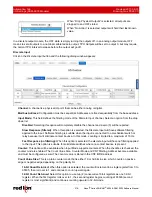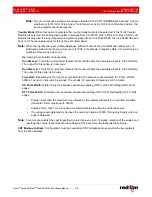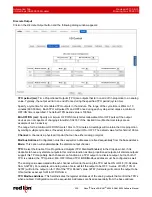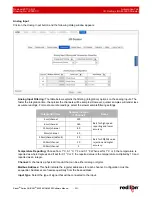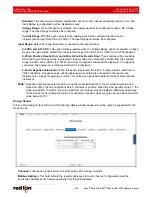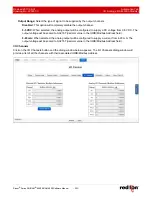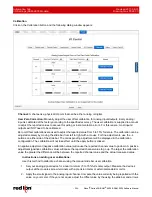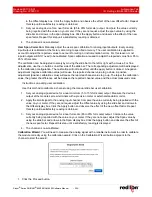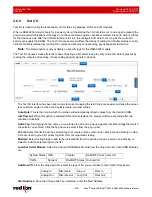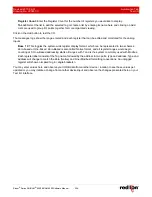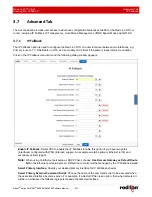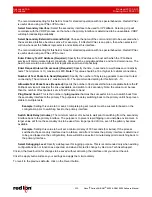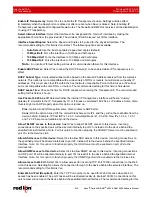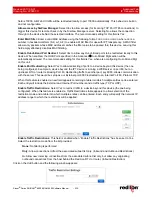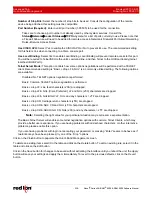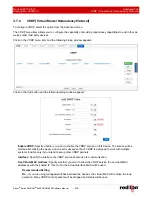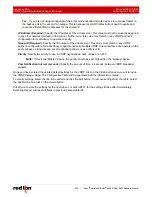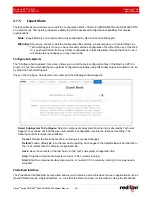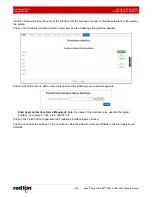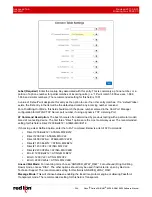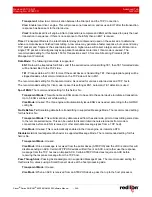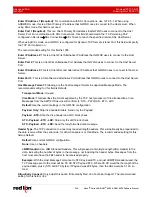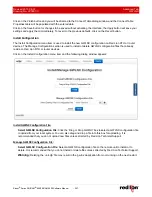
Advanced Tab
Revised 2017-08-31
IP Fallback
Drawing No. LP0997-C
- 232 -
Sixnet
®
Series SN/RAM
®
6000 & RAM 9000 Software Manual
The recommended setting for this field is
None
for standard operation with no special behaviors.
Restart IPSec
is useful when using an IPSec VPN tunnel.
Select Secondary Interface:
Select the secondary interface to be used for IP Fallback. Selecting vrrp will
coordinate with the VRRP process, so that when the primary interface is determined to be unavailable, VRRP
will stop broadcasting availability.
Select Secondary External Command Script:
Choose the name of the command script to be executed when
the associated interface becomes active. For example, if a
Restart IPSec
is an option, then when selected, it
will run whenever the fallback logic selects and activates this interface.
The recommended setting for this field is
None
for standard operation with no special behaviors.
Restart IPSec
is useful when using an IPSec VPN tunnel.
Enter Primary Test IP Address (Required):
Specify the IP address of a host with which the IP Fallback
service will communicate to test connectivity. Value must be a pingable address, and not a domain name. The
best choice would be an address that represents end-to-end connectivity.
Enter Request Interval (in seconds) (Required):
Specify the time, in seconds, to wait between connectivity
tests. The minimum is 10, maximum is 600.
Note:
This value should be 30 or higher for cellular connections.
Number of Test Packets to Send (Required):
Specify the number of 0 byte ping packets to send out to test
connectivity. The minimum is 2, maximum is 30. The recommended setting for this field is 5 - 10.
Allowable Test Packet Loss (Required):
Specify the number of lost packets that are acceptable before the IP
Fallback service will consider the link unavailable, and switch to its secondary. Note: the value must be less
than the number of test packets set via Test Packets to Send.
Ping Round Count:
This is the number of
ping rounds
that must be successful in a row to switch back from
the secondary interface to the primary. The purpose is to delay switching back to the primary until it has proven
stable to multiple tests.
Example:
Setting this value to 3 means 3 complete ping set rounds must be successful based on the
configuration prior to switching back to the primary interface.
Switch Back Delay (minutes):
The minimum number of minutes to wait prior to switching from the secondary
interface back to the primary interface. The purpose is to prevent rapid flipping in an unstable environment. A
larger value will force the secondary link to be used for a longer period of time, even if the primary becomes
available.
Example:
Setting this value to 5 will set a minimum delay of 300 seconds (5 minutes). If the process
switches to the secondary interface due to a failure, and after 2 minutes the primary interface is determined
to be good (based on the configuration), there will still be an extra 3 minute delay prior to switching back to
the primary interface.
Select Debugging Level
: Specify a debug level for logging purpose. This is recommended only when existing
configurations do not function as expected, and when directed to change by Red Lion Technical Support.
Click on the
Save
button for changes to be saved without activating the interface until you reboot the unit.
Click the
Apply
button will save your settings and apply them immediately.
To revert to the previous defaults, click on the
Revert
button.

